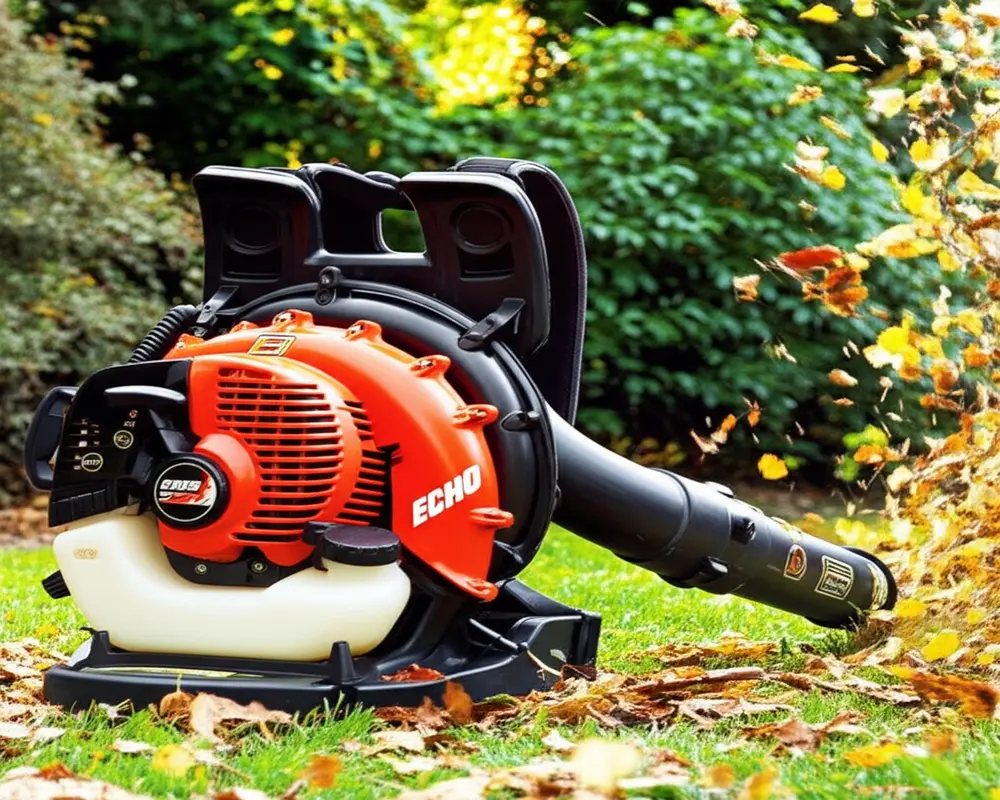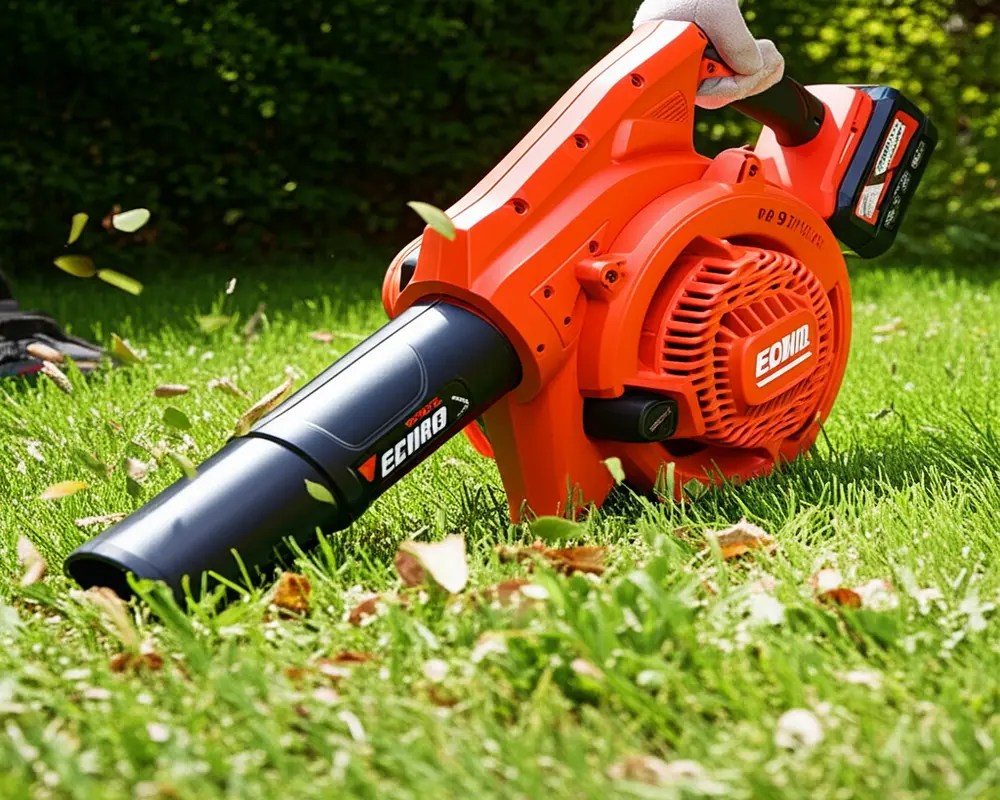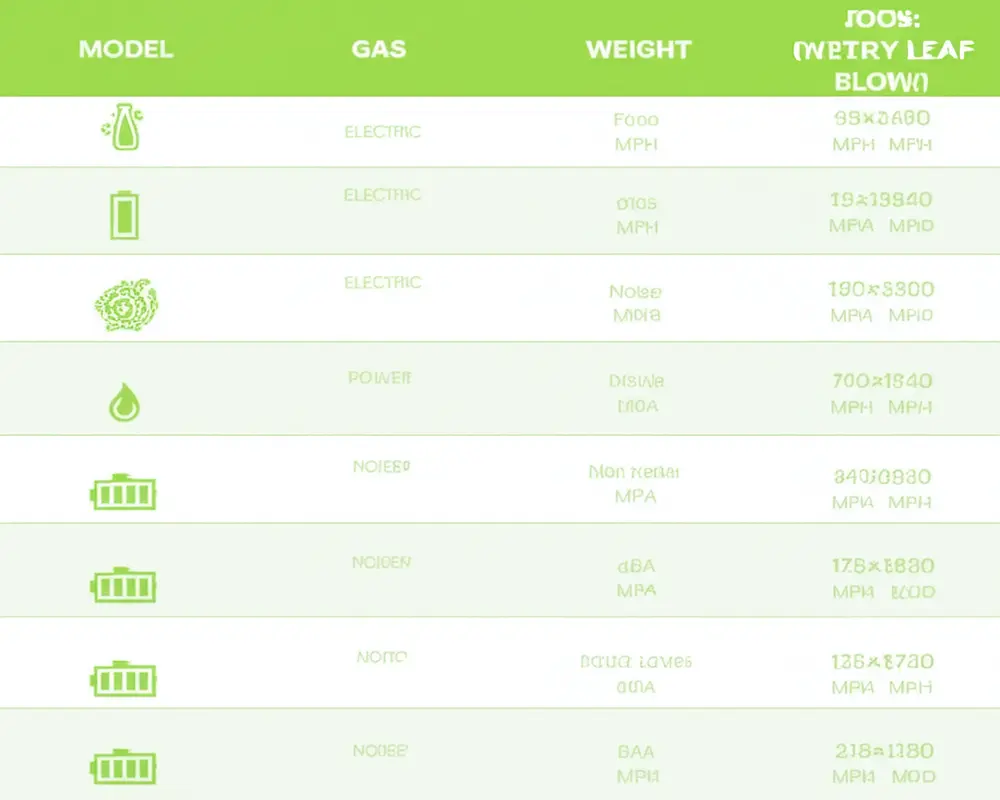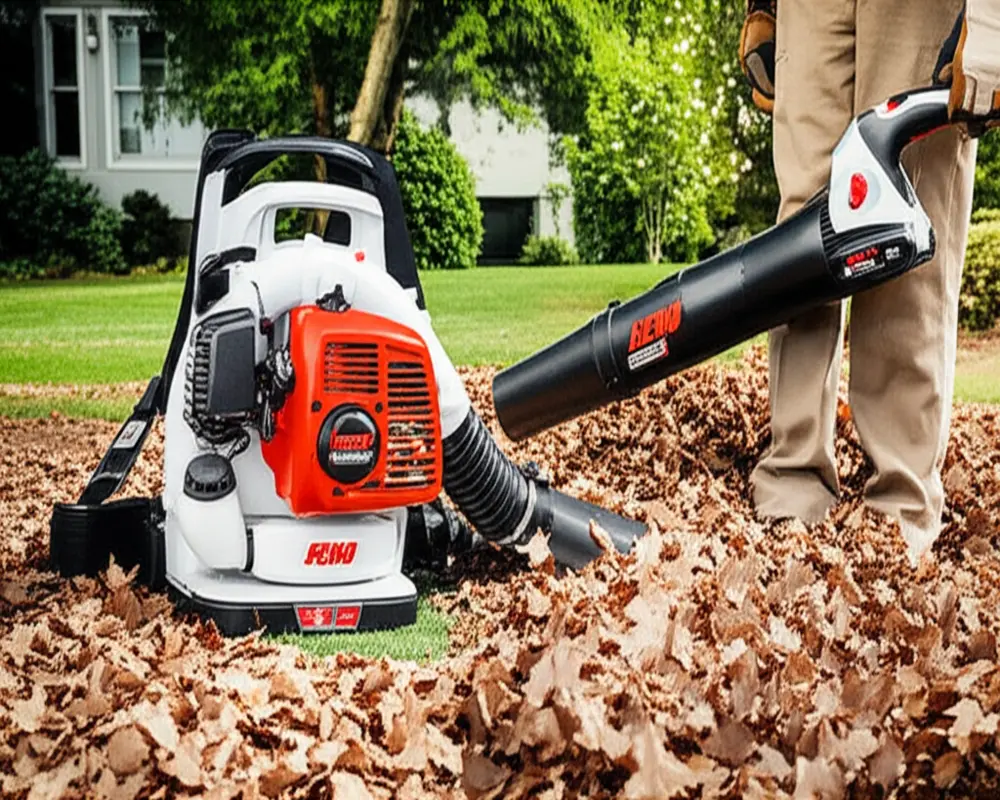Echo Leaf Blower: Comprehensive Guide for 2025 Buyers
Choosing the right leaf blower is essential for maintaining a tidy yard, whether you’re a homeowner managing seasonal debris or a professional landscaper handling larger properties. Among the many options on the market, the Echo leaf blower stands out for its blend of durability, performance, and professional-grade quality. This guide provides an in-depth look at Echo’s range of leaf blowers in 2025, helping you decide which model best suits your needs.
Thank you for reading this post, don't forget to subscribe!I. Introduction: Why Choose an Echo Leaf Blower?
A. The Echo Legacy
Echo has earned a reputation as a leader in outdoor power equipment, known for manufacturing tools that last and perform consistently under demanding conditions. Their leaf blowers are engineered to deliver robust power, efficiency, and ease of use, making them a preferred choice among both homeowners and professionals. The brand’s commitment to quality is reflected in features like advanced engine technology, ergonomic designs, and innovative accessories that enhance productivity.
B. Who Is This Guide For?
This guide is tailored for a diverse audience: homeowners looking for reliable equipment to maintain their yards, landscapers who need efficient and powerful tools to streamline their work, and outdoor professionals requiring durable leaf blowers for frequent use. No matter your level of expertise or the scale of your tasks, this article will provide valuable insights.
C. What You’ll Learn
Throughout this article, you’ll gain a clear understanding of the different types of Echo leaf blowers, including gas-powered and battery-powered models. We’ll explore the top-rated Echo blowers of 2025 with detailed reviews, compare features to help you make informed decisions, and offer practical buying tips and maintenance advice to maximize your blower’s lifespan.
II. Understanding Echo Leaf Blower Types & Power Sources
A. Gas-Powered Echo Leaf Blowers
Gas-powered leaf blowers from Echo are known for their high power output and extended runtime, making them ideal for managing heavy debris and large yards.
1. Handheld Models
These models are lightweight and easy to maneuver, suitable for light-duty tasks and smaller areas. They offer the convenience of portability without compromising on power, ideal for quick cleanups.
2. Backpack Models
Backpack leaf blowers provide the heavy-duty power needed for prolonged use and larger workloads. Echo’s backpack models feature ergonomic harnesses that distribute weight evenly, reducing user fatigue during extended operation.
3. Pros and Cons
Gas-powered blowers excel in power and runtime but tend to be noisier and produce emissions. They require regular maintenance such as fuel mixing, spark plug checks, and air filter replacements. These factors contribute to higher upkeep but also enable tackling demanding yard work efficiently.
B. Battery-Powered (Cordless) Echo Leaf Blowers
Echo’s cordless leaf blowers have advanced significantly, offering a quieter and low-maintenance alternative to gas models.
1. Available Handheld & Backpack Options
Echo offers handheld battery blowers for light to medium tasks and backpack versions for more substantial debris clearing. Their battery platforms support interchangeability with other Echo battery-powered equipment.
2. Voltage and Battery System Details
Battery voltages such as 58V and 72V indicate power capacity, while amp-hours (Ah) measure the battery’s energy storage and runtime potential. Higher voltage and amp-hour ratings translate to longer use and stronger airflow.
3. Pros and Cons
Battery-powered blowers operate quietly and emit no direct pollution, making them eco-friendly choices. Maintenance is straightforward, focusing mainly on battery care and charging. However, limited runtime per charge and higher initial battery costs are considerations.
C. Key Performance Metrics Explained
Understanding these metrics will help you better evaluate different models:
- CFM (Cubic Feet Per Minute): Measures the volume of air moved, indicating efficiency in clearing debris.
- MPH (Miles Per Hour): Reflects airspeed; higher MPH means stronger blowing force.
- Engine Size (cc) / Battery Voltage (V) & Amp-Hours (Ah): Indicates power output and energy capacity.
- Weight & Ergonomics: Important for user comfort and reducing fatigue.
- Noise Level (dB): Impacts user comfort and compliance with local noise ordinances.
III. Top-Rated Echo Leaf Blowers: In-Depth Reviews & Recommendations
A. Best Overall Echo Leaf Blower: Echo Gas-Powered Backpack Model
The top pick balances power, runtime, and user comfort, making it versatile for various tasks.

Key Specifications: This model delivers airflow exceeding 500 CFM at speeds over 180 MPH, powered by a 79.9cc engine. It weighs approximately 24 pounds (10.9 kg) and operates at a noise level near 70 dB.
Unique Features: Equipped with Echo’s Shred ‘N’ Vac technology that shreds leaves while vacuuming and Posi-Loc pipes for quick tube adjustments.
Performance Analysis: It handles wet and dry leaves with ease and can manage large debris effectively. Its ergonomic harness reduces strain during extended use.
Pros: High power output, extended run time, versatile usage, ergonomic design.
Cons: Higher upfront cost, requires regular maintenance, heavier than handheld models.
Ideal User Profile: Landscapers and homeowners with large yards needing a reliable, heavy-duty blower.
B. Best Echo Backpack Leaf Blower (High Power) Models
Models such as the PB-8010 and PB-770T are designed for professional use, offering exceptional power and durability.
These blowers provide airflow rates around 600 CFM and airspeeds up to 190 MPH, with engines ranging from 79cc to 80cc. Their robust construction supports intensive daily use, while ergonomic features enhance user comfort. Maintenance remains essential to keep these machines running at peak performance.
C. Best Echo Handheld Gas Leaf Blower
For users who prefer lighter equipment, handheld gas blowers like the PB-2520 and PB-580T deliver solid performance without the bulk of backpack units.
These models typically feature engines between 21cc and 58cc, producing airflow between 400 and 450 CFM at speeds up to 160 MPH. Their lightweight design—often under 10 pounds (4.5 kg)—makes them suitable for quick cleanup tasks.
D. Best Echo Battery Leaf Blower
The Echo DLM-2100 represents the latest in battery-powered technology, combining portability with effective airflow.

This blower runs on a 58V lithium-ion battery, offering up to 30 minutes of continuous use. It generates airflow around 400 CFM at 120 MPH, ideal for small to medium yards. Its quieter operation and low maintenance make it attractive for residential use.
E. Best Echo Leaf Blower for Homeowners
Homeowners benefit from models balancing ease of use and value, such as the Echo PB-2520 handheld gas blower or the battery-powered DLM-2100. These models provide sufficient power for typical yard debris without overwhelming complexity.
F. Best Budget-Friendly Echo Options
For those seeking cost-effective solutions, lower-powered handheld models offer reasonable performance at a lower price point, albeit with less runtime and power than premium units.
IV. Echo Leaf Blower Comparison Guides
A. Echo Gas vs. Battery Leaf Blowers
Below is a detailed comparison of gas and battery-powered Echo leaf blowers:
| Aspect | Gas-Powered Echo Leaf Blowers | Battery-Powered Echo Leaf Blowers |
|---|---|---|
| Power | Higher airflow and speed; suitable for heavy-duty tasks | Moderate power; best for light to medium tasks |
| Run-time | Extended run-time with fuel refill | Limited by battery capacity; recharge required |
| Noise Level | Louder operation (~70-80 dB) | Quieter (~60-65 dB) |
| Emissions | Produces exhaust fumes | Zero direct emissions |
| Maintenance | Requires fuel mixing, spark plug, and filter upkeep | Minimal; mainly battery care and charging |
| Cost | Generally lower initial cost but ongoing fuel expenses | Higher upfront cost for battery and charger |

B. Echo Handheld vs. Backpack Leaf Blowers
Handheld blowers excel in maneuverability and are lighter, making them ideal for small areas and quick jobs. Backpack models offer greater power and comfort for extended use on large properties, thanks to better weight distribution and higher airflow capacity.
C. Echo vs. Competitors Overview
When compared to brands like Stihl, Husqvarna, and Toro, Echo leaf blowers stand out for their blend of power, durability, and user-friendly features. Echo often provides competitive pricing and comprehensive warranties, supported by a nationwide dealer network for service and parts.
- Power & Performance: Echo’s engines and battery systems deliver reliable output consistent with professional standards.
- Durability & Build Quality: Rugged construction materials enhance longevity.
- Price Point: Generally positioned mid-range with good value for features.
- Warranty and Support: Typically includes 5-year warranties on engines with accessible customer service.
V. The Ultimate Buying Guide: How to Choose the Perfect Echo Leaf Blower
A. Assess Your Yard Size and Debris Type
For small to medium yards (up to 0.5 acres), handheld or lightweight battery blowers usually suffice. Larger properties over 0.5 acres benefit from backpack models with higher airflow to handle heavy or wet debris more efficiently.
B. Power Source Preference Considerations
Consider environmental impact, noise restrictions, and maintenance willingness. Gas blowers provide uninterrupted power but require more upkeep, while battery models offer quieter, cleaner operation with the trade-off of limited runtime.
C. Comfort & Ergonomics
Look for models with adjustable tube lengths, cushioned handles, and well-designed harnesses. Weight distribution is critical to reduce fatigue, especially with backpack units.
D. Noise Level Considerations
Check local noise ordinances and personal comfort preferences. Battery blowers typically produce less noise, making them suitable for neighborhoods with restrictions.
E. Budget & Long-Term Investment
Balance upfront cost against ongoing expenses like fuel, batteries, and maintenance. Battery systems may require additional investment in chargers and replacement batteries over time.
F. Where to Buy
Purchasing from authorized Echo dealers or reputable online retailers ensures genuine products and warranty coverage. Register your warranty promptly to secure support and service benefits.
VI. Owning & Maintaining Your Echo Leaf Blower
A. Essential Maintenance Tips
Proper upkeep extends your blower’s life and maintains performance:
- Use the correct fuel mix with stabilizers for gas models.
- Clean or replace air filters and spark plugs regularly.
- Clean nozzles and store the blower properly during winter months.
- For battery models, follow manufacturer guidelines for charging and storage to preserve battery health.
B. Troubleshooting Common Issues
Common problems include difficulty starting engines, loss of power, excessive smoke emissions, or battery charging challenges. Refer to Echo’s support resources or authorized service centers for diagnosis and repair.
C. Recommended Accessories and Attachments
Enhance your blower’s versatility with gutter cleaning kits, ergonomic shoulder straps, vacuum attachments, and appropriate safety gear for eye and ear protection.
D. Warranty and Customer Support
Echo offers robust warranty policies, often including 5 years for residential use. Locate authorized service centers via the Echo Official Website to ensure quality repairs and genuine parts.
VII. Frequently Asked Questions (FAQs)
- How long do Echo leaf blowers typically last?
- With proper maintenance, Echo leaf blowers can last 8 to 10 years or more, especially gas models with routine servicing.
- What is the best fuel mix for Echo gas leaf blowers?
- Echo recommends a 50:1 ratio of unleaded gasoline to two-cycle engine oil. Using fuel stabilizers can further protect the engine.
- Can Echo leaf blowers be converted to run on alternate fuels?
- Standard models are designed for gasoline use. Conversion to alternate fuels is generally not recommended due to engine tuning and warranty considerations.
- Are Echo leaf blowers effective on wet leaves?
- Yes, particularly backpack gas models with higher power can handle wet leaves and heavier debris better than handheld or battery units.
- Where can I find replacement parts for my Echo leaf blower?
- Replacement parts are available through authorized Echo dealers and the official Echo website.
VIII. Conclusion: Making an Informed Decision
Echo leaf blowers combine proven durability, power, and innovative features tailored to a variety of users—from casual homeowners to landscaping professionals. By understanding the differences in power sources, blower types, and performance metrics, you can select a model that fits your specific yard size and maintenance needs. Remember to consider comfort, noise levels, and ongoing costs to ensure your investment delivers reliable service for years to come.
For additional insights on garden tools and maintenance techniques that complement your leaf blower, explore our detailed guides such as Hand Cultivator Tines Explained and Pruning Shears Handle Comfort Guide.
Stay informed and equipped by visiting authoritative sources like the Consumer Reports on Leaf Blowers for unbiased reviews and the EPA Guidelines on Equipment Emissions to understand environmental impacts. The Arbor Day Foundation also provides valuable resources on sustainable yard care practices.
With the right Echo leaf blower, your yard maintenance can become more efficient, effective, and enjoyable throughout the seasons.

